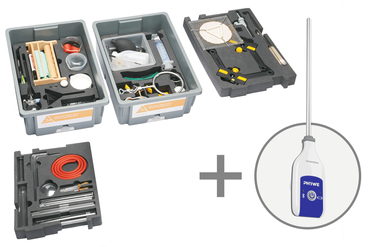Gypsum can be used as versatile material, for example "prints" from different small objects can be built with gypsum. Such "negatives" can be filled with other materials which create the so called "positive". In this experiment students produce imprints of coins and examine how plaster molds can be produced and what applications are based on plaster molds.
Learning objectives
- How to make plaster molds with gypsum
Benefits
- Easy teaching and efficient learning by using interactive experimentation PHYWE-Software
- Experiment is part of a complete solution set with experiments for all Inorganic Chemistry matched with international curriculum: all topics are covered



